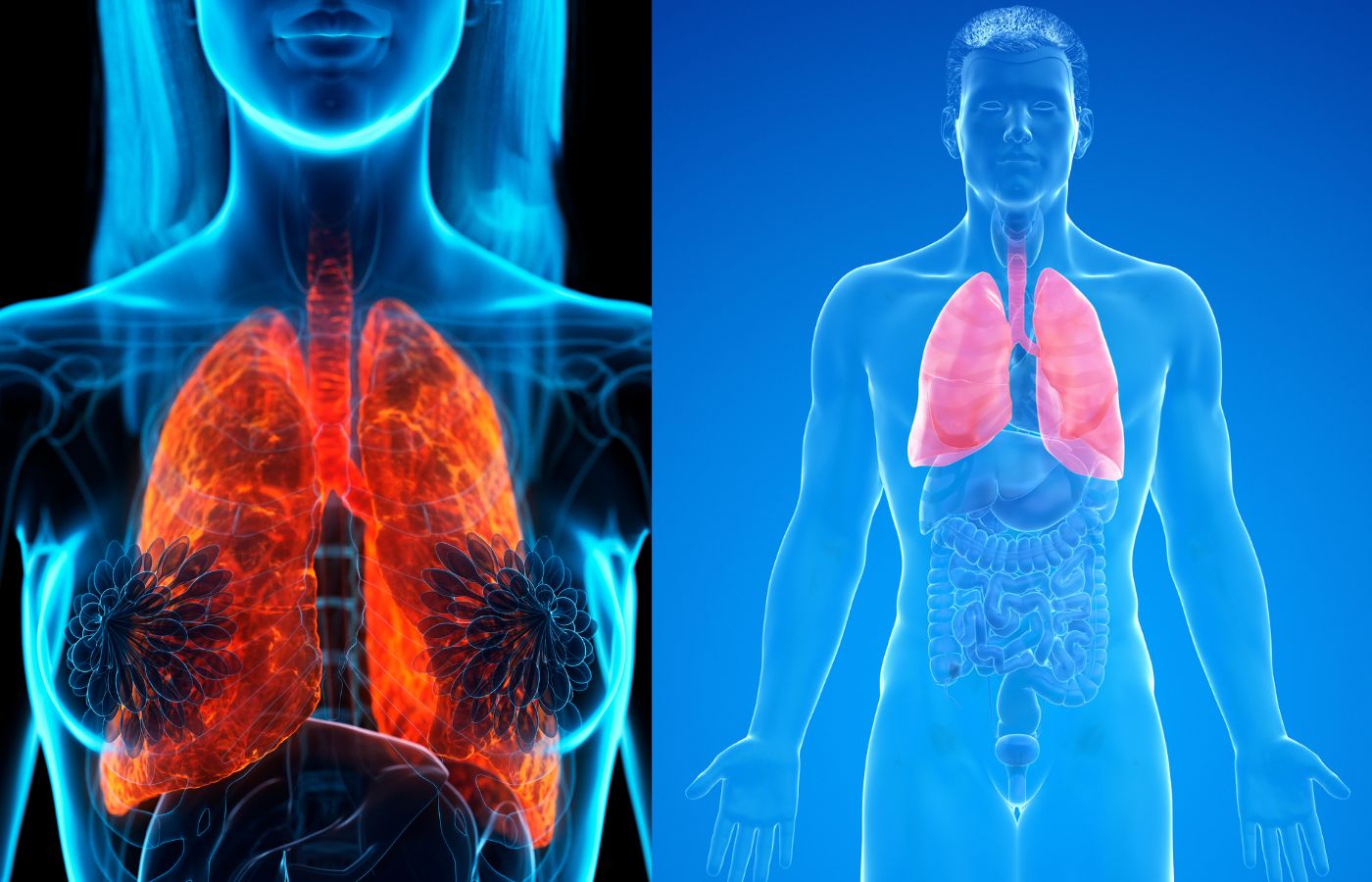
The leading cause of COPD is smoking. Prolonged exposure to tobacco smoke damages the airways and lung tissues, leading to inflammation and reduced lung function. Even if a person does not smoke directly, exposure to secondhand smoking can increase the risk of COPD. Passive smoking irritates the lungs and contributes to respiratory diseases over time.
People working in environments with dust, chemicals, and fumes—such as construction sites, factories, and mines—are at higher risk of developing COPD. Long-term exposure to air pollution and airborne toxins can cause lung irritation and chronic inflammation.
A rare genetic condition called Alpha-1 Antitrypsin Deficiency (AATD) can lead to COPD. This protein protects lung tissues from damage, and its deficiency makes individuals more susceptible to lung diseases.
COPD symptoms develop gradually, often becoming more severe over time. Recognizing them early can help in seeking timely medical intervention.
One of the earliest symptoms of COPD is difficulty breathing, especially during physical activities. As the disease progresses, simple tasks like walking or climbing stairs can become challenging.
A persistent cough, also known as a smoker’s cough, is a common sign of COPD. The cough may produce mucus (sputum) that can be clear, white, yellow, or green.
People with COPD often experience wheezing, a whistling sound when breathing, caused by narrowed airways. Doctors listen for lung breath sounds and chest sounds to detect airway obstructions and respiratory issues.
Since COPD weakens the lungs, people with this condition are more susceptible to infections like pneumonia and the flu. These infections can worsen symptoms and lead to hospitalization.
COPD restricts oxygen supply to the body, leading to fatigue and weakness. Patients often feel exhausted even after minimal exertion.
Diagnosing COPD requires a series of tests and medical evaluations. Early detection can help in managing symptoms effectively.
Doctors assess a patient’s medical history, smoking habits, and exposure to pollutants. They also listen to breathing sound and chest sounds using a stethoscope to detect any abnormalities.
A common test called spirometry measures how much air a person can inhale and exhale and how quickly. Reduced airflow indicates COPD.
This test measures oxygen and carbon dioxide levels in the blood, helping determine the severity of lung impairment.
Blood tests can check for genetic conditions like Alpha-1 Antitrypsin Deficiency. Sputum analysis helps detect infections that may worsen COPD symptoms. Searching for pathology labs near me, laboratory near to me, or pathology near by me can help locate nearby diagnostic centers for necessary testing.
Although COPD has no cure, it can be managed with proper treatment and lifestyle changes.
Quitting smoking is the most effective way to slow the progression of COPD. Avoiding secondhand smoking is equally important.
For severe COPD cases, supplemental oxygen helps maintain adequate oxygen levels in the body.
A structured program that includes exercise, nutritional counseling, and education to improve lung function and overall well-being.
Flu and pneumonia vaccines help prevent infections that could worsen COPD symptoms.
If you experience persistent breathing sound issues, abnormal chest sounds, or frequent lung infections, consult a healthcare provider for necessary tests. Searching for pathology labs near me, laboratory near to me, or pathology near by me can help find a diagnostic center for a comprehensive evaluation.
COPD is a serious lung disease that affects breathing and overall health. Understanding its causes, symptoms, and treatment options can help in early diagnosis and better management. If you or a loved one is experiencing persistent cough, wheezing, or difficulty breathing, seek medical attention immediately. Utilizing resources like pathology labs and diagnostic centers for regular check-ups can improve health outcomes and ensure timely treatment.